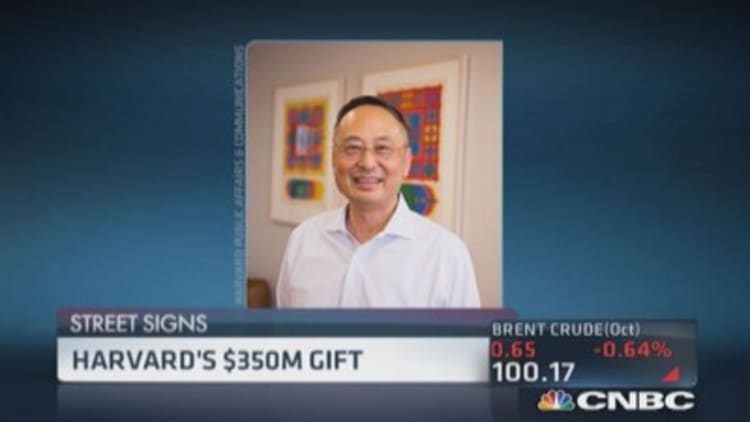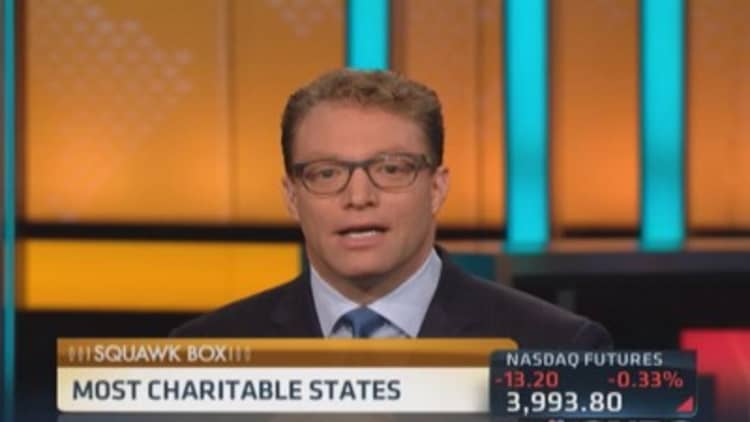As the wealth gap in charitable giving grows, having a donation plan in place is more important than ever.
Low- and middle-income families—those earning less than $100,000 a year—donated 4.5 percent more of their income in 2012 than they did in 2006, before the recession hit, according to a new report from The Chronicle of Philanthropy. But over that same period, wealthier consumers earning $200,000 or more reduced their share of income donated by 4.6 percent.
That may seem counterintuitive, but Stacy Palmer, editor of the Chronicle, says among wealthier individuals, "there's still a very great feeling of caution"—especially with market fluctuations. Low- and middle-income Americans, meanwhile, have felt more of the pinch of the down economy. "They're still trying to help each other out," said Palmer.
Read More $2,500 donated: How much of it makes it to charity?
Although the gifting divide may be growing, experts in the nonprofit space say lower-income families have often given a higher portion of income to charity. But that doesn't discount the impact of gifts from the wealthy.
Earlier this year, the Giving USA report called out an increase in individual, couple and estate gifts of $80 million-plus as a key reason for an overall 4.4 percent, or $14.2 billion, year-over-year bump in charitable giving for 2013.
"Of course, the wealthy still write bigger checks, even though it's a smaller percentage of income," said Sandra Miniutti, vice president of marketing for nonprofit assessment site CharityNavigator.org.
Read MoreCharitable giving hits new record
Regardless of how much you can afford to give, financial advisors say it's important to have a plan. "Charity is a choice, and one really is in no position, in our opinion, to make judgments as to what people do," said Kevin Meehan, a certified financial planner in Itasca, Illinois.
The important part is making your budget work with that to ensure you're maximizing donations without putting your other financial goals at risk.

(After all, in 2013, the average U.S. household had $15,898 in nonmortgage debt, including credit cards, student loans and other liabilities, according to the Urban Institute. Salt Lake City residents—who the Chronicle reports gave the highest percentage of income, at 5.4 percent—carry an average $15,024 in debt. In Las Vegas, where charitable gifts as a percentage of income are up 14.9 percent since 2006, the average resident owes $14,692.)
It's easy to overshoot on planned donations, said Sean T. Keating, a certified financial planner in Eatontown, New Jersey. Very few clients set an annual budget for charitable gifts. "Most donations end up coming from spur-of-the-moment decisions," he said—friends and family making "asks" for charitable races, school fundraisers and other campaigns. "Everything's a fundraiser," he said. "That adds up over the course of the year."
Read MoreWhich state has the most delinquent borrowers?
Miniutti said consumers and charities would both be better served if people planned out their donations at the beginning of the year. That gives you the opportunity to pick causes that are meaningful to you and to research nonprofits on sites such as CharityNavigator.org,GuideStar.org and the Better Business Bureau's Wise Giving Alliance to ensure your donations will be used effectively.

Look beyond groups with flashy campaigns and those that approach you. "It's important to look at who gets left out," said Palmer. There are often effective groups that don't spend a lot on marketing, which may make better use of your cash.
It's also smart to assess how you give—the wrong approach can mean you aren't giving enough, or at least, not as much as you intended. That might mean gifting appreciated assets rather than cash, which avoids a tax hit and allows for a larger gift, said Meehan.
Or simply minimize the cut of your donation that never makes it to the charity. Nonprofits often pay a 3 to 5 percent processing fee to handle a check or donation through an intermediary web site, said Miniutti. Telemarketers' and street promoters' cuts can be much bigger, she said—in some cases, 80 or 90 percent of your pledge. The best bet: give directly to the charity of your choice.


